The United States appears to have a unique place among developed economies regarding our level of homelessness[1]. For Americans traveling to Europe, it is a pleasant surprise at the low number of homeless on the continent. For tourists who visit the United States, the massive numbers of homeless are disconcerting.
When you look at numbers per population, the United States sits near the middle of the pack in terms of homeless per 10,000. But the two most visited cities, New York and Los Angeles, have very high rates of homelessness and give the impression that sticks with visitors and residents alike.
This essay will make a baseline comparison with developed countries in Europe, North America, Australia, Japan, and South Korea. Then, we will look at some causes in the United States and beyond. Some of these reasons will be common across countries, and others will be unique to the country itself.
Where is Homelessness most endemic?
Among industrialized/developed countries, the United States homeless problem sits near the middle of the pack. The illustration below shows the national rates of homelessness per 10,000 residents. To the let, there is a depiction of homelessness in different states.
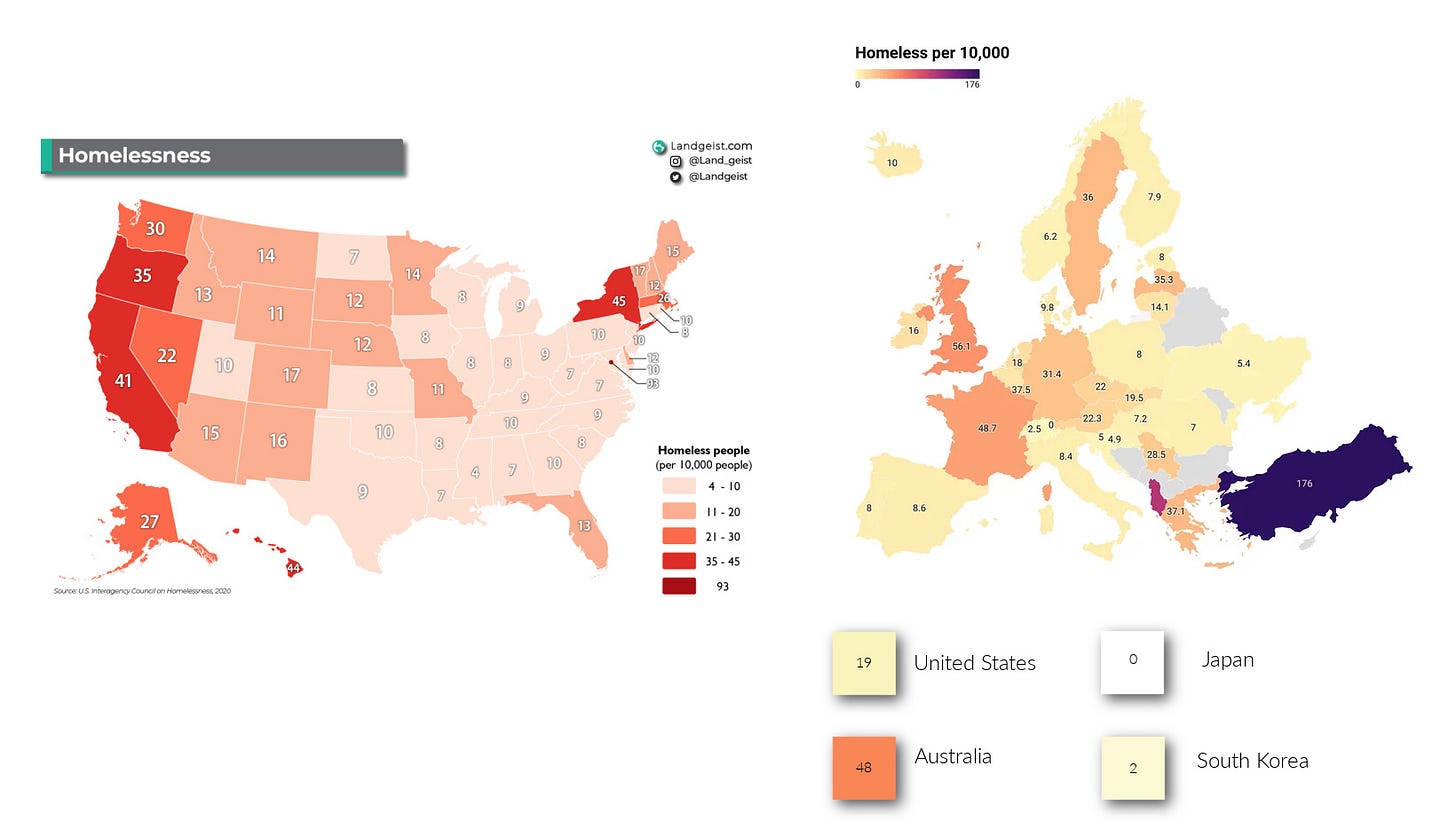
When investigating this internationally, we find many ways to count the homeless. Some examples:
1. The UK count includes people in homeless shelters PLUS the numbers sleeping outside (“in the rough”).
2. Paris counts only those who sleep outside and does not include temporary shelters
3. The numbers in Germany are particularly odd as they only count Germans who are homeless; there are 196,000 homeless Germans, but another 411,000 non-Germans[2].
4. Finland’s numbers are older. New measures have been taken through 2024; Finland’s rate is now about 5 per 10,000. This proves addressing homelessness is not impossible.
5. The United States leaves counting to the states, and the various states have different rules.
Looking at the rough statistics, the United States doesn’t appear to have a homelessness problem compared to other countries. However, the national map shows that the homeless population is concentrated in a few states. The US figures may be far off from reality because it is up to individual states to include or not include the undocumented (illegal aliens). I know that California does include the undocumented in their homeless numbers and Texas does not include them in their homeless numbers. This can happen because the Federal government gives states wide latitude in counting homeless people. These states' numbers are rolled up to the national figures, so there is an undercount in the American rate, as noted.
Within Europe, those countries that have the most immigrants, primarily from Syria or ex-colonies, show high rates of homelessness—particularly England, France, Germany, and Sweden. These numbers do not include recent emigrants from Ukraine or from the countries that have taken in Ukrainian refugees, like Poland, Slovakia, and Romania.
There appears to be a wide variance in the population of homeless people by country, but looking further, we see some common details.
An Epidemic in Cities
Looking at the numbers further, you can find the highest rates of homelessness in major cities – we will get more into the details of these when reviewing the causes of homelessness.
Rates in Various cities
These numbers break out how many of these people are in overnight shelters:
London ~ 167,000 (155,000 in shelters)
Paris ~ 300,000 (296,000 in shelters)
Berlin ~ 30,000 (24,000 in shelters)
New York ~ 200,000 (132,000 in shelters
Los Angeles ~ 75,312 (55,000 in shelters)
The homeless population is greater in cities than in rural or suburban areas, which Americans accept as normal.
Causes & Solutions
Several common characteristics exist within the homeless community, each one more important in some cities than others. Not all have a reasonable solution. This essay will highlight the significant issues. This information is primarily based on American studies and attitudes.
Housing prices
In many cities, particularly New York and the major West Coast Cities, one chief issue is the cost of housing. People have been priced out of homes near them. New York, San Francisco, Los Angeles, Seattle, etc., have some of the highest home prices in America but also need many service workers. This creates a strain where local workers need help to afford housing.
In some places, like Los Angeles, RV ghettos have sprung up as living places. These locations do not have sewers, electricity, or water. While living in an RV in any shape is better than being on the street, they are not safe or sanitary.
It is important to note here that most homeless do not travel to better conditions, this can be proven by a large homeless population in Alaska. Most homeless travel to the largest nearby city where some services might be provided.
Solution: Provide low-cost or temporarily free housing.
Some communities offer less expensive or subsidized housing for local public employees. In New York, for example, lower-cost housing (not low-cost, but lower) is reserved for employees of the Police, Fire, and School departments as well as a few other professions that the city deems critical.
Palo Alto did a very similar thing at one time, as those same classes of public servants could not live in or near the city.
The issue with a subsidized solution is that most people who can benefit are usually already housed far out from the city. Therefore, this solution does not affect the actual issue of homelessness within the city, it will often bring more residents to the city (driving up prices further) without addressing actual homelessness.
Two cities have proven that providing housing works in some situations. Houston has resolved most of its homelessness problem by providing subsidized housing in the current stock of private apartments. The city subsidizes this housing solution, coordinates the outreach services throughout the city, and requires these support providers to work together. It has been a success and is now a model for other cities.
Salt Lake City pioneered this approach, which led to nearly solving their homeless problem. Unfortunately, once the solution was in place and filled to capacity, more homeless kept being displaced. This solution is not particularly expensive to implement with the housing portion, but it is costly with people needed to guide the residents.
Solution: Build villages of tiny homes.
Related to the solution of subsidizing the current housing stock, many cities in the West are attempting to build communities of tiny homes for the homeless. These are communities of very small homes that are self-contained. They may be independent homes with bathrooms and kitchenettes or simply safe housing, some with communal toilets and/or kitchen facilities. A few of these villages are designed for longer-term living, with larger prefab homes built around communal gathering spaces.
In any case, the key to these facilities succeeding requires including social services to help residents get jobs, stay sober, and move to traditional housing as soon as practical.
Mental Illness, including PTSD
The United States does not have a good support system for those with mental illness. This includes veterans who are often diagnosed with PTSD (post-traumatic stress disorder). In areas where the number of homeless people with mental problems is very high, like New York City, there are almost no facilities to help people. The only “solution” is to spend a night or two in Bellevue Hospital. Their facilities are strained, and the staff has no choice but to move people out very quickly.
Veterans with mental issues are a significantly more complicated issue. Most Americans assume that the Veterans Administration supports and helps all veterans. This is not entirely true. A lucky few get service dogs or are offered therapy, but many veterans are the victims of over-stretched services and wait times for help that are excessively long. PTSD is complex to diagnose and confront. Many veterans suffer in embarrassed silence, but they cannot function day to day as they expect.
In some major cities, like Los Angeles, the wait time for help at the VA (Veterans Hospitals) is months long. Physical problems for veterans returning home are much more straightforward to provide than help for mental complications. Mental issues may take years to resolve and are often delayed for those with more visible issues. These veterans often end up on the street.
Solution: Provide Mental Health Support
Many Americans see providing better healthcare for Veterans as something we should provide, albeit we often balk at the cost. On the other hand, providing mental support for non-veterans using public funds is not popular. The popular perception is that “those” people can still pull themselves up by their bootstraps.
Drug Addiction
Many of the homeless are drug addicts. That is a statement, but not the cause of homelessness. Of course, many people have become homeless due to drugs. This is truer in large cities. One of the great things about smaller cities and towns throughout America is that there is often the support of families to help catch drug addicts who might otherwise end up homeless.
However, many of the drug addicts on our streets reached out for the relief of drugs once they became homeless. Perhaps they broke when the government started cracking down on OxyContin, and they turned to heroin or methamphetamines to resolve pain or hit the high where they don’t feel things. These people are homeless, but the doctors who over-prescribed OxyContin and the drug pushers who built it to be addictive are not homeless. They bask in large paychecks and are actively ignored when punishing drug users. Veterans or mentally unstable people who cannot get the help or drugs they need often turn to illegal drugs and end up on the street. Even people who are temporarily homeless are constantly exposed to this mental way out and take it.
Solution: Hopefully, support in smaller groups
The only real solution we supply now is through non-profit groups and a few cities that have drug recovery programs. Tiny home support and shelter access is often dependent of a no drug policy. That is great for some residents, but this policy does not support getting off drugs except by kicking the people with problems out and back onto the street.
Reality
Americans think poorly of the homeless in general and drug addicts in particular. It is easy to blame the homeless that people see on the street who are high or strung out. But we refuse to support the cost of helping those people. Americans have been told over and over again that treatment is expensive and most of the homeless will fall back into addiction anyway. Many people support just “locking them up.” However, jails and prisons do not offer a lot of drug rehab in most states. And so, the public views drug addicts as impossible to help, not looking at the reasons this might have happened.
Domestic Violence
Domestic Violence is not a large contributor to homelessness, but its effects are pernicious. Domestic violence drives women and families from their homes and sometimes onto the street. This group of people may be hesitant to apply for governmental help, fearing the abuser could locate them. Mothers may be reluctant to go into shelters if they are separated from their children[3].
Adolescents may be pushed out of the house for a variety of actions that are not acceptable to parents. This is a particularly vulnerable situation and, anecdotally, often leads to child trafficking or prostitution.
Solution
Luckily, there are more solutions focused on this problem. Seeing children or mothers on the street engenders more empathy than “normal” homelessness.
There are battered women’s shelters in place around the country for victims of domestic violence. These are often privately run and funded but available. There is a hotline and support system for the victims of domestic violence.
There are some solutions for adolescents who find themselves on the street. The issue is that adolescents often don’t have knowledge or access to these solutions.
Asylum Seekers
Every developed country has signed the “Geneva Convention of 1951.” This signed agreement defines refugees and asylum seekers. It also commits countries to a series of actions to provide support.
Asylum seekers in the United States, Europe, and Australia often face long waits for a hearing (in the US, usually years) and include a restriction which states they cannot work legally. They can easily fall through the cracks and end up homeless. Or take places like New York and Chicago, where asylum seekers were shipped to in the last few years. In those cities, shelters designed for the homeless are overwhelmed by asylum seekers and the homeless cannot be served.
Solution
Everyone agrees on an American solution here. Hire more Immigration Judges to quickly move to grant or reject asylum and let them work. Another solution is just to let these people work at all. When I lived in New York, the city and state wanted to let asylum seekers work until their cases were heard. The federal government disallowed it, while still requiring systemic support for them.
Illegal Immigrants
Interestingly, most studies find very few illegal immigrants are homeless. They usually find some support system of friends or employers to provide some shelter. This is because if you are illegal and homeless on the streets, you could be deported.
People who hit a problem economically
Two sayings now sum up how fragile our safety net is. “Every American is one medical problem away from homelessness.” And, “Most Americans are one job away from homelessness.”
These both refer to the cost of living in America and the lack of safety nets. In nearly all other developed countries, medical procedures are free or heavily subsidized. Well-employed Americans are safe from this kind of medical bill, given medical insurance by their employer. But many other employers, from McDonalds to Walmart, avoid employing people for overt 30 hours a week to avoid paying for health insurance programs.
For a real-world example, look at the employment safety net. The United States has an “at will” employment system. If you are fired in the United States, you are legally owned zero severance compensation. You are often not able to access unemployment – which can be limited to those employees laid off or made redundant and let go. Those who are fired are often deneyed access to unemployment as they are not “deserving” of public support.
Contrast that situation in Europe. If made redundant, an employee with at least eight months of service is entitled to receive a statutory severance payment, calculated as follows: 1/4 month of salary per year of seniority for the first 10 years; 1/3 month of salary per year of seniority starting from the 11th year. Additionally, an employee must be fired for a valid reason. If they are fired otherwise, it is almost always illegal.
COVID
In most countries, COVID-19 made the homeless situation worse. Strict lockdowns meant that much of the assistance for the homeless closed down. In New York, the homeless were put up in empty hotels. Often, they were isolated from mental health support and access to medication, furthering the opinion that helping the homeless was impossible. This solution was very unpopular after COVID-19, when residents found themselves suddenly next to a homeless shelter. More information below in NIMBY.
Roadblocks in ending homelessness (in the US)
Attitude
I can only speak from an American perspective here. More than a few attitudinal issues make solution implementation very difficult.
Homeless is natural
This is an extension of the American philosophy that the United States allows everyone to pull them up by their bootstraps. Many people view the homeless as impossible to help because “they don’t do the work to pull themselves out of it.” People see help-wanted signs and do not understand why “those people” are still homeless. Intellectually, most Americans understand that people with almost no daily access to sanitation, no permanent address, and often no phone are unhireable in their current state. But the image of help-wanted signs and monthly reminders of employment levels and jobs which go unfilled leads to a reinforcement of this excuse.
Americans are constantly fed the idea that the free market is the best judge of resources. Within this attitude is the assumption that if the homeless cannot succeed, it is because they are not trying.
Financial Support is a Waste of Resources
Americans have a world view of who deserves support. In many people's view, if resources are used to help the homeless, there are fewer resources to help “real” tax-paying Americans. The constant deficit in the American budget adds to the feeling that there are limited resources, and every dollar spent to help the homeless means less money to help them. The soaring budget of the Defense Department is understandable, but a minuscule fraction of that money going to help the homeless is a waste.
It is the Democrats / Republicans / Conservatives / Liberals
Homelessness, like nearly every other American problem, is chalked up to problems with the other political side. Republicans often claim that homelessness is caused by Democrats with the example that cities fun by Democratic mayors create homeless. In fact, homelessness is concentrated in cities and most big cities are run by Democrats.
Democrats often claim that Republicans favor donors over helping the poor. In cast, donor issues are prioritized by Republicans and Democrats alike.
The political blaming makes any resolution more difficult because there is always pushback against a solution.
NIMBY
NIMBY stands for Not In My Backyard. This acronym summarizes a real problem. Residents, particularly homeowners, in some areas are all for supporting homeless, just not in their vacinity. This is true with low-cost housing and even more true in the case of supporting or housing the homeless.
For example, in New York’s Westside at 59th Street, a new project will see a 500 million dollar Women’s Shelter in the neighborhood with newer high-rise condos. It is for women only; residents will be kicked out if they use drugs. A non-profit healthcare site will only be open during work hours. Residents have to leave every morning and be out during the day to look for work.
However, the residents’ fight against this solution is impressive. There are nominal reasons; there is another shelter only ½ mile away (which is full with a waiting list), a children’s park is next door and they will have to see homelessness (there isn’t a child or person in New York City who hasn’t had experience with the homeless), and the homeless will wander around the neighborhood during the day.
The real reason is that property prices will be negatively affected. For non-Americans, this is a very odd consideration. America, Australia, and, to a lesser extent, the UK and Canada use homeownership as a means to wealth. Most homeowners in America see their home as a source of savings and economic growth. It is usually their single largest asset and home prices have risen in value in the last 50 years much more than returns on savings.
If a homebuyer is given a choice of two identical houses, one being in an “average neighborhood” and one being in an “upscale neighborhood” but near a homeless shelter, they will buy away from the homeless shelter every time. And so, in a very real way, homelessness does reduce property values. This basic understanding is often reflected in city zoning, effectively keeping any multifamily project out of most suburbs.
In Europe, multiunit buildings (apartments, condos, etc.) are the norm. In many rich countries like Switzerland and Germany, home ownership is low, with the majority of the population renting. This makes the attitude of “NIMBY” carry less weight.
Disillusion
This is a growing issue in America. If the government allocates money to something and most of it doesn’t get to the recipients anyway, why do it? Americans have painfully discovered that there is a two-tier system of justice and wealth in the United States, and we want to be on the right side. “Paying” for loafers is a fool’s game. This belief is growing because it is actually true in the States. Money can be tied up for years just for someone to make a political point in Washington. Some states have avoided expanding federal-funded health care support because those who get it MIGHT be unworthy.
If the system is rigged, the thought goes, then you have to protect yourself.
Lack of Civic Engagement and Leadership
This view was held as old-fashioned but is more true than ever now (IMHO). In 2000, the book Bowling Alone: The Collapse and Revival of American Community was published. It postulates that American civic organizations like the Rotary Club, the Masons, and other fraternal organizations have collapsed, leading to a rise in selfishness in communities and disappearing civic engagement. Other pundits look to the decline of organized religion and churches as the course of civic disengagement. Private schools, many publicly funded, drive class divisions and reduce engagement in public.
When civic engagement falls, and separate facilities for the rich are common, the “public good” is no longer critical or supported. The homeless become someone else’s burden and can be ignored.
This makes perfect economic sense. Americans compete for project funding at the national, state, county, and city levels. We elect politicians to fight for our funds, and a limited amount exists. In some states, local taxes are taken and reallocated at the state level. For parents fighting for limited funds for their schools vs. nebulous help for “the homeless,” their children’s welfare will always come first. The AARP (American Association for Retired People) is a rich and successful lobbying organization. They lobby on behalf of the elderly, and not the poor. The poor are left with little of no lobbying on their behalf.
Resolution?
There are solutions to homelessness. The best in the United States include temporary safe housing, support for finding and holding jobs, and support for mental issues, including addiction.
However, there is little appetite for paying for this in America if it requires taxpayer funding or the political will to push through support for a powerless segment of society.
Instead many cities have “solved” this crisis by making homelessness illegal. Cities or states have outlawed sleeping outside, in tents, in parks, at underpasses, or other areas the public might be offended by. The hope is these unhoused and poor individual will either move on, or be sent to jail. A uniquely heartless solution.
In Europe a different approach tries to reframe the problem. Here is an AI generated overview of their solutions:
Prevention
The European Union (EU) has launched the European Platform on Combatting Homelessness, which aims to prevent homelessness through counseling, employment programs, and legal and financial assistance. The platform also aims to ensure that people are not discriminated against because of their homelessness status.
Support
The EU has also called on countries to provide equal access to public services, such as health care and education, for people experiencing homelessness. The EU also wants to ensure that people are not forced to live in temporary housing long-term, and that they are offered appropriate housing when they are released from institutions like hospitals, prisons, or care facilities.
Housing solutions
Some approaches include providing housing as a starting point, rather than an end goal, and developing socially sustainable housing programs. The EU also wants to prevent evictions, and provide assistance with finding appropriate housing when evictions do occur.
The Lisbon Declaration aims to end homelessness in Europe by 2030, but progress has been limited. According to feantsa.org, at least 895,000 people are experiencing homelessness in Europe, but the real number is likely much higher.
[1] For this essay, I will use the term “homeless,” not “unhoused,” for ease of comparison.
[2] Numbers here form Statiscs.com
[3] There may be a few men pushed out of the home do to domestic violence, but it is a tiny percentage.

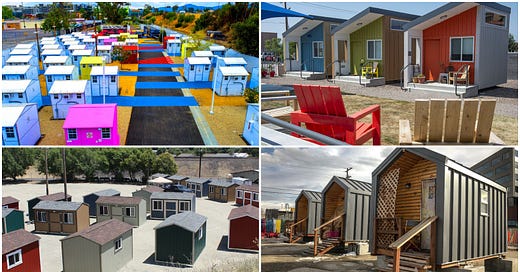

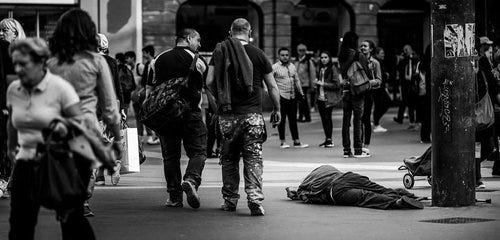

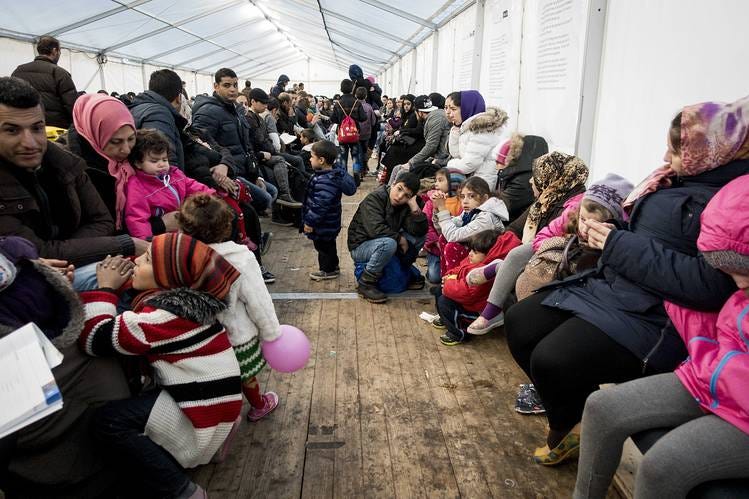

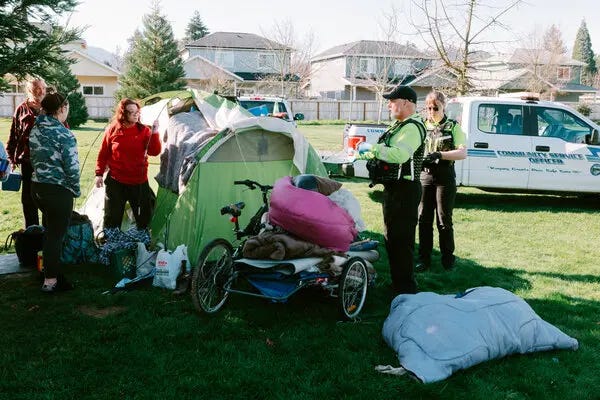
This perfectly aligns with the stance I've come to take on homelessness as I've worked through a PhD in economics.
Easy may be too big of a word for a problem like this, but fixing homelessness is possible, with many possibilities for methods of doing so contained in this article. The issue is the actual appetite for doing it. Regardless of what people may claim. It doesn't seem to exist.
There seems to be very little sympathy for the homeless situation, despite the fact that humans claim to want to fix homelessness. When it comes time to put money where mouths are, North Americans take no action. Because homeless people often cannot (and do not if they can) vote, there is no incentive for politicians to force a solution through either. Adding this onto the fact that homeless humans are often unemployable (lack of access to sanitation, no permanent address, possible no bank account, etc.), it's not as simple as yelling at your local homeless human to go fill the vacancy at the local McDonald's. These are humans who require changes at the system level.
Not the individual level.